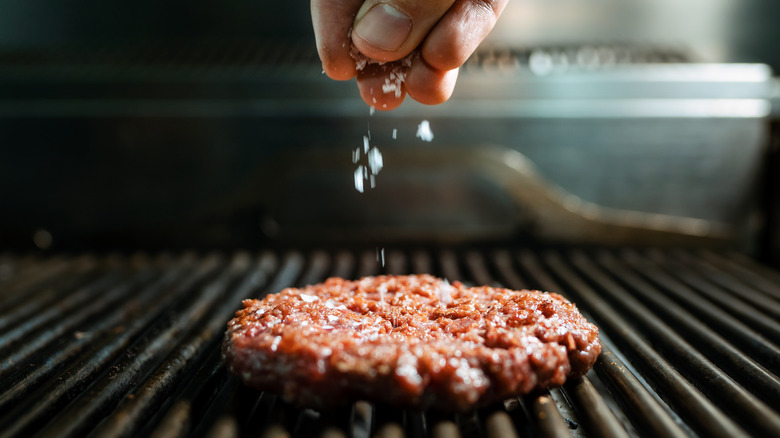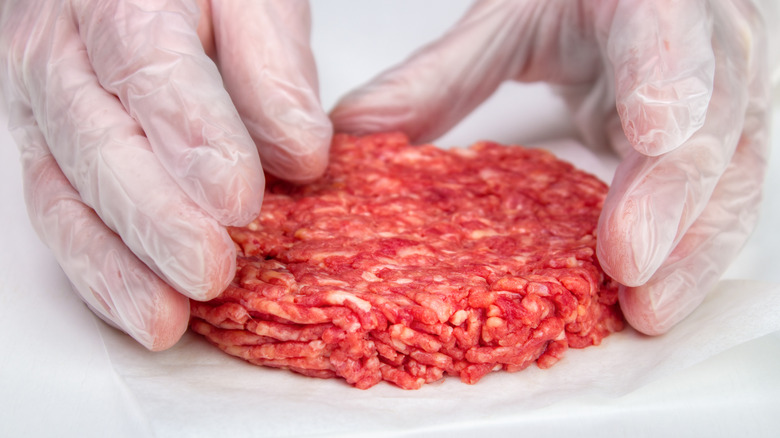How To Prevent Burgers From Shrinking When Grilling Them
It's time America woke up to the problem. It's hitting us where it hurts — straight at our burger supply. We know about increased meat prices and all the bad things that can be lurking in our ground meat. But this is more serious. How often have you put plump, juicy specimens of raw Angus on the grill, only to serve up puny little pucks of meat dwarfed by their oversized buns? We're not talking about frozen-pre-fab burgers notorious for their slender profile and dense texture. We're talking prime quality stuff here, lovingly prepared by hand and vigilantly cooked over a real grill, only to virtually disappear when serving time arrives.
Burger shrinkage is real. It's time to take back the beef. But how? Several factors cause burger mass loss, as Hormel contributor and New York-based caterer Chef Vanessa Cantave shared with Mashed. She explained that it's a challenge everyone faces when cooking ground meat. "You have to remember that with all that fat melting, your burger is going to lose about 30% of its volume," Cantave said. Five Star Home Foods also lists several factors that impact the rate and amount of shrinkage. The key elements are the amount of fat in your meat, the moisture content, and the heat at which you cook the burgers.
Fat, water, heat, and shape
The more fat and moisture in your burger, the greater the volume loss during cooking. Many stores add water and salt to boost the weight of their meat products, which will quickly cook away once the patties hit a hot surface — so check your label for what's inside and try to avoid any additives. Leaner meat will shrink less — but it will also yield a less juicy burger, so be aware of the tradeoffs in the equation; a juicy but not too-fatty option is 80% lean meat.
Pauline Loughlin at I Really Like Food has solutions that echo Chef Vanessa Cantave's advice: putting a "dimple" in the middle of your burger. Cantave concurs that shaping is key to a good (and good-sized) burger, saying that to avoid creating the dreaded hockey puck form, she also likes to shape the patties a little wider and flatter. A wider burger with a slight middle depression avoids meat loss in the critical zones. Loughlin also advises watching your temperature: A lower heat will prevent some burger mass loss, so she suggests not closing the lid on your grill to help keep your burgers intact.

